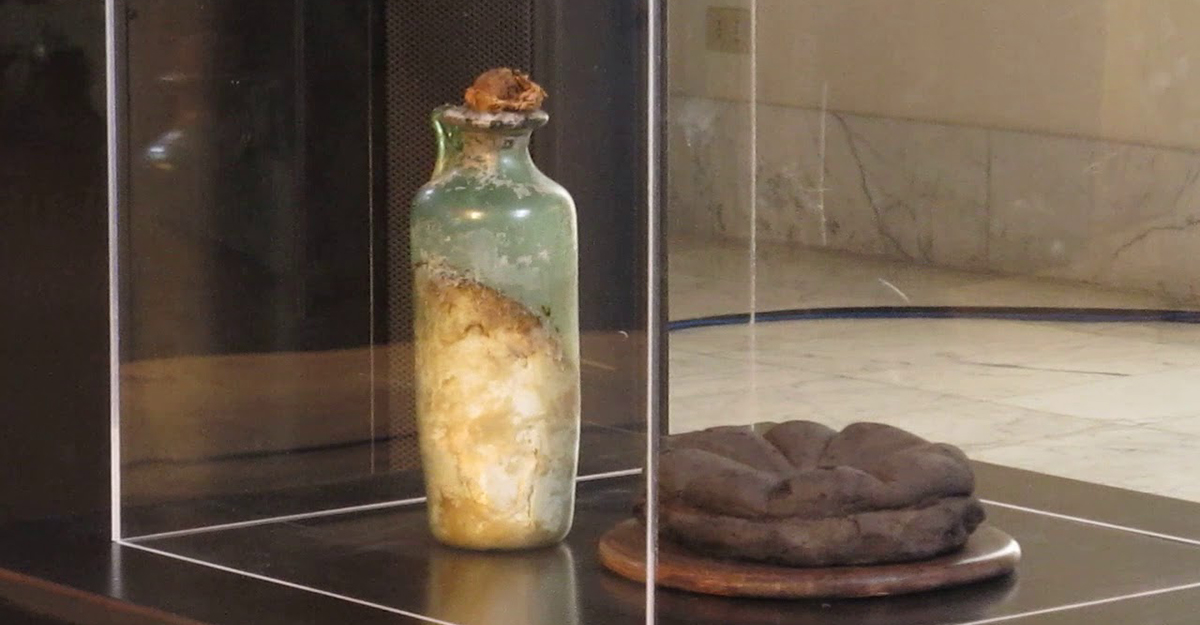IT | EN
The oldest bottle of olive oil in the world has been discovered. As part of a cooperation with the Department of Agriculture of the University of Naples "Federico II", the National Research Council and the Naples National Archaeological Museum (MANN), researchers from the Department of Environmental, Biological and Pharmaceutical Sciences and Technologies (DiSTABiF) of the University of Campania Luigi Vanvitelli, conducted a research that led to the discovery of the oldest bottle of olive oil in the world.
The idea of analysing the artefact, found at the MANN, came in 2018, when a service for SuperQuark was being filmed under the guidance of Dr. Alberto Angela, on the magnificent deposits of the museum, which house thousands of artefacts found above all (but not only) in Pompeii, Herculaneum and other sites buried by the dramatic eruption of 79 AD.
On this occasion, a bottle from the Pompeian era was noticed, lying in a dusty box, inside which there was a solidified material in perfect condition. The bottle had been in the Museum since 1820, when it was discovered during some excavations of the Bourbon age and placed in these deposits together with thousands of other finds. The find was found together with a loaf of bread found intact in the excavations: faithfully and surprisingly reproducing a Pompeian fresco representing, in fact, a loaf of bread and a bottle of olive oil.
It was decided, together with the director of the museum, prof. Giulierini, to perform accurate scientific analyses, to discover the nature and characteristics of the contents of that bottle, kept for years and years, first under the ashes from the eruption of Vesuvius in 79 AD. and then in the deposits of the Museum.
The research activity was conducted by a multidisciplinary team, coordinated by Professor Raffaele Sacchi of the University of Naples "Federico II" with the participation of the Vanvitelli University and in particular of the research group led by Professor Carmine Lubritto of DiSTABiF.
The researchers were able to demonstrate the authenticity of that sample of olive oil. In particular, at the iCONa isotope mass spectrometry laboratory of DiSTABiF, and in collaboration with the LABEC - CHNet laboratory of Florence of the National Institute of Nuclear Physics, the group of Professor Lubritto was able to date, with extreme accuracy, the find in the period [4-90 https://www.nature.com/articles/s41538-020-00077-w





